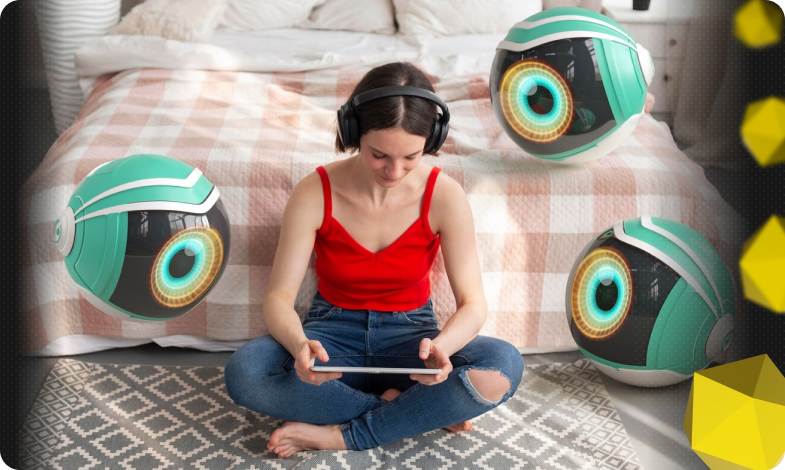Content of the article

At the beginning of 2022, Google planned the gradual introduction of a new search ranking technology – MUM. According to the information contained in the announcements, the innovation will be revolutionary. This technology should be the next round in the evolution of the already familiar BERT algorithm.
We have tried to collect in this article everything that is known about this algorithm at the moment. Let’s try to understand the features of the technology: how much the usual search will change and how it will affect traditional SEO promotion.
What is the MUM algorithm
MMM (Multi-tasking Unified Model) is an algorithm that will enable more advanced Google searches. By advanced, we mean “multi-level” search, for which the user could previously spend from 2 to 8 hits to the search engine. This effect is planned to be achieved by trying to predict the likely result of the search, and not just follow the semantics.
The algorithm will affect both text search and image search. For the latter, this algorithm is integrated into Google Lens.
The introduction of MUM became possible through the use of neural networks that have been tested in search for quite a long time.
The impact of MUM on SERPs
It should be understood that such fundamental changes will entail a significant change in search results.
An attentive user could notice that over the past 10 years, the appearance of search results has undergone more than one change, constantly supplementing with new blocks and modifying old ones. It is in this vein that the development of SERP in Google is expected for the next 2-3 years.
By the way, many experts predict that the canonical “10 blue links”, which we used to call “TOP-10”, will shift even lower in the near future, giving way to even more interactive information blocks, where the most up-to-date information on request.
Of course, this trend calls into question the relevance of traditional SEO and the shift in priorities towards these same blocks. It is highly unlikely that the majority of users will ignore these elements if they can respond to a query.
Moreover, the introduction of MUM implies a much greater impact of personalized issuance. For example, the same request from two different users may lead to different results just because they have different interests.
Main components of MUM
The update will bring three additions to the search:
- Things to know
- Topic Zoom
- Visual Exploration
Things to know
This element is responsible for related requests. That is, all additional options for search results that may also be of interest to the user. Topics will be selected and ranked based on real user experience.
During the announcement, Google representatives used the search query “acrylic painting” as an example. As a result of the search, it turned out that about 350 topics are associated with this key phrase. So “Things to know” will allow you to understand what queries users most often study this topic and offer them in order from the most popular to the least popular.

Topic Zoom
A tool that allows you to scale or narrow the scope of a topic. In other words, it is an opportunity to move from the general to the particular or from the particular to the general.
This is what scaling looks like:

Here’s how to narrow your search:

Visual Exploration
The latest addition is a kind of “tool for inspiration”. This functionality will be focused on those users who are looking for all sorts of ideas in search.
So far, it is not entirely clear how the new element will fundamentally differ from the current search options, but according to Prabhakar Raghavan, then when querying by type:
“Halloween Decor Ideas” or “Outdoor Vertical Garden Ideas” will give the user a page with visual results to help them get the inspiration they need.
SEO in MUM realities
As an SEO company, we are primarily interested, of course, in the issue of website promotion when implementing a new algorithm.
It’s too early to draw specific conclusions, but it’s obvious that traditional SEO is slowly becoming a thing of the past.
Unfortunately, Google is increasingly moving towards the voluntary-compulsory use of advertising to sell products. And it is not at all excluded that in the near future the only place on the first page of the search to attract customers will be only the product feed, and the presence of such a number of additional information blocks will hardly contribute to the interaction of users with sites from the TOP 10.
In any case, some elements of modern SEO will not lose their importance, and some will even become even more useful. We have identified some of the most likely candidates:
Relevance
In the near future, most likely, our main task in terms of promotion will be to assign pages with the most correct relevance. Therefore, work with semantics is still relevant.
Micromarkup
Along with relevance, we believe that micro-markup will become one of the most important promotion vectors. It is very likely that if there are as many information blocks as planned by the developers, structured data will even take 1st place in terms of the need for implementation, because they will directly indicate the ownership of the page.
Structure
We believe that a large-scale structure will be among the mandatory components of the site for a long time, if only because only if we have it can we be sure that the pages are fully relevant to our queries.
Content
If there’s one thing we’re sure of, it’s the need for quality content. Text, photo or video materials – you need everything that will be useful to your potential client!
To summarize
MUM will definitely change the way many users and webmasters think about organic search. Google has planned a really interesting update for a long time and it will be very interesting to follow its development.
One of the main questions is how much MUM will affect the current participants in the search results: will the inhabitants of the TOP-10 lose their positions, will it become even more difficult for niche sites to compete with marketplaces and aggregators, and many, many other aspects.






 07/02/2022
07/02/2022  3124
3124



